*글 하단의 '한국어 텍스트 다운로드'를 클릭하면 원문을 확인할 수 있습니다.
A master of Korean modern and contemporary traditional painting, Byeon Gwansik (commonly referred to by his moniker Sojeong), was known as “The Artist of Mt. Geumgang.” Capturing the grand vistas of Mt. Geumgang and the elderly who cross Danbalryeong ridge all in a single frame. Danbalryeong Ridge is a major representative work of Sojeong’s final years.
Off in the distance, a mountain summit thrusts up to the sky, rugged and perilous. A line of connected sharp peaks surround it, as if forming a folding screen, giving the whole scene a sense of stability. Danbalryeong ridge is reaching, twisting like a wave into the shape of an ‘S.’ The skilled use of methods like seolchae (設彩), a layering of light inks, and hochojeom (胡椒點), a repetitive dotting technique, come together to reveal rocky surface textures and create exquisite depth and dimension. The elderly hikers heading to Mt. Geumgang in search of a good view, are distributed at even intervals and move in the same direction, drawing the eye inward and giving the impression of upward motion.
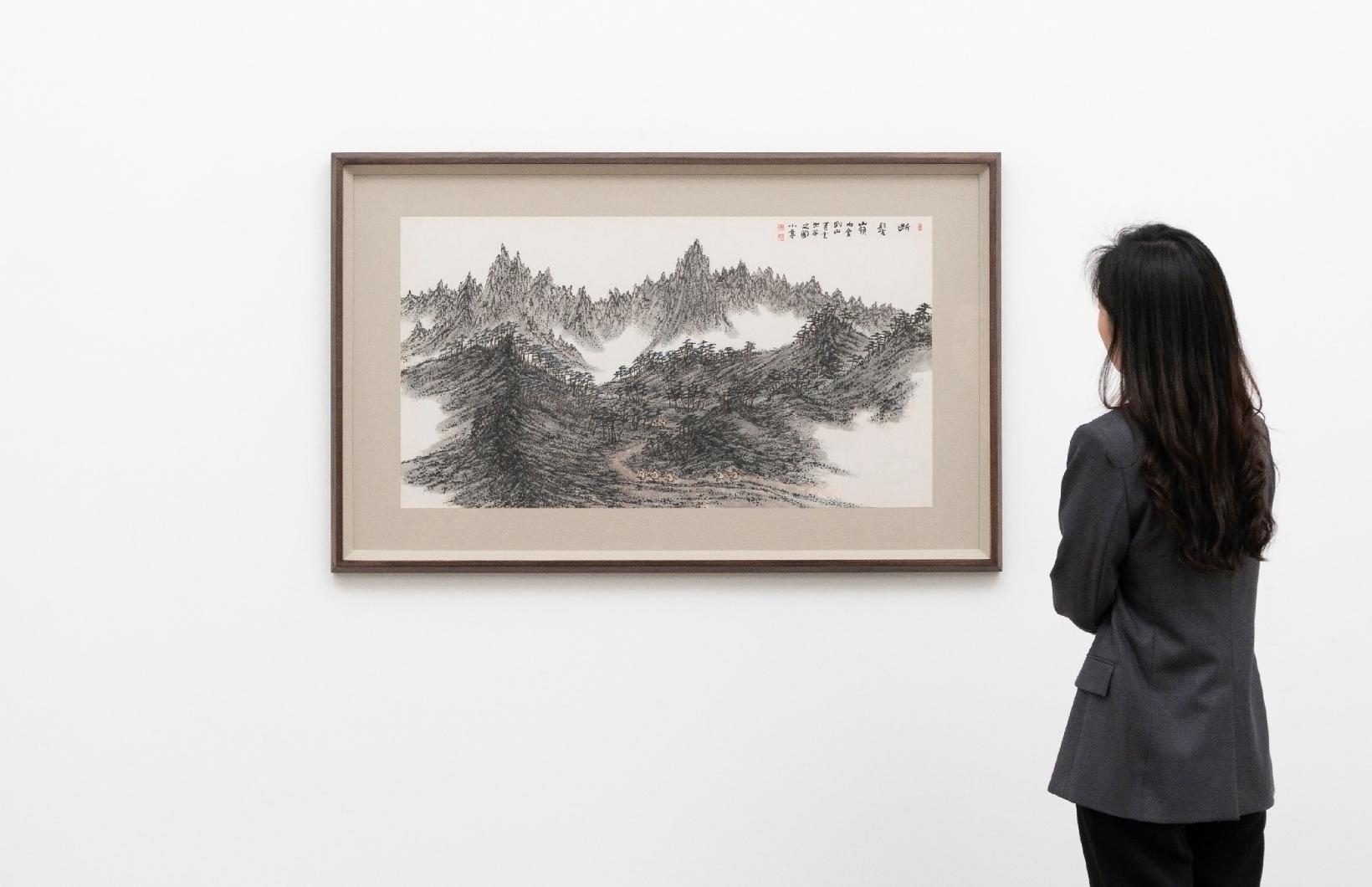
Produced in 1974, Danbalryeong Ridge is both a major work in the oeuvre of Byeon Gwansik (1899-1976) and a masterpiece that must be part of any discourse on the landscape depictions of Mt. Geumgang. The view from Danbalryeong ridge, stretching across a vast expanse to take in the twelve thousand peaks of the Geumgang mountain range soaring up out of the clouds is the grandest of spectacles. Master landscape painters of the late Joseon Dynasty like Jeong Seon (1676-1759) and Yee In-moon (1745-1824) have also left behind major works depicting the view. Indeed, by adding the tag, “In Mt. Geumgang, A Map of Summer Clouds Leaving the Valley” (內金剛山 夏雲出谷之圖), The artist himself makes a point of emphasizing the place bursting through the clouds.
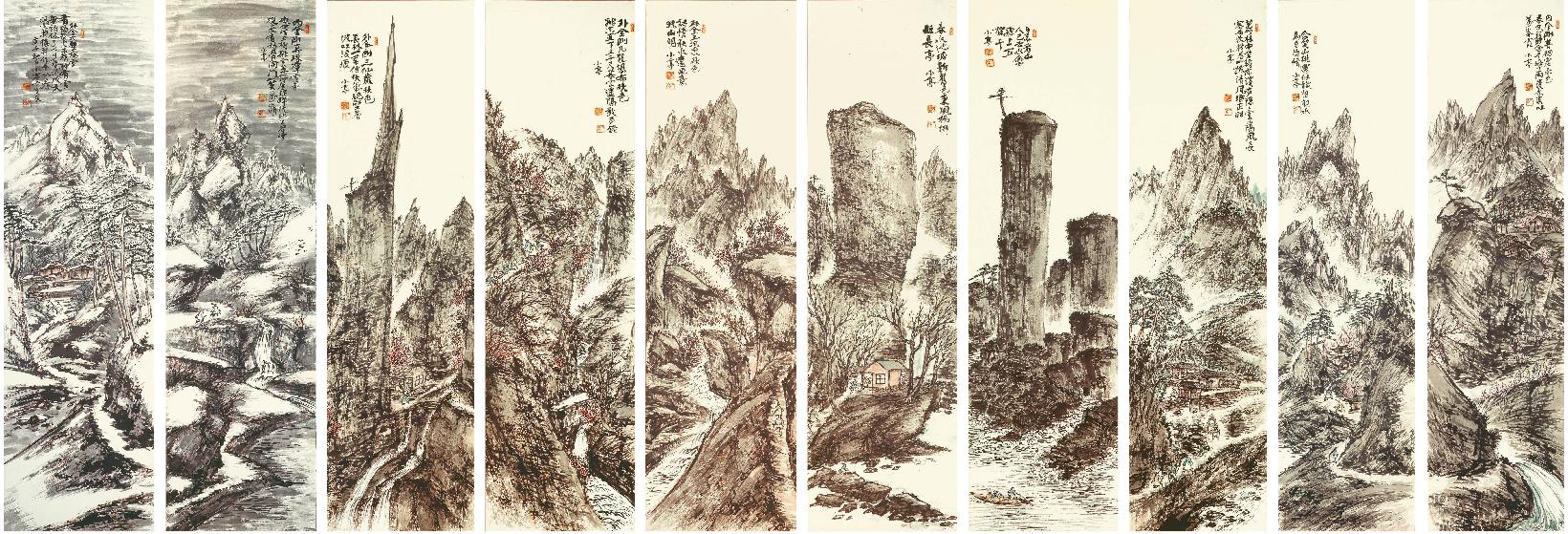
Byeon painted Mt. Geumgang so often that he became to be known as “The Artist of Mt. Geumgang.” He captured the spirit of Mt. Geumgang using Jeokmuk (積墨, Layered Ink) and Paseon (破線, Splashed Stroke) methods to create ways of layering ink to express depth. According to the artist, he had spent eight years sketching Mt. Geumgang and more than 30 years visiting and painting the varied attractions and landmarks throughout the range. In fact, rather than considering Mt. Geumgang to be a recurring subject of the artist’s career, it may be more accurate to say that the mountain naturally immersed itself into every aspect of Byeon’s paintings. Byeon himself claimed that he and Mt. Geumgang had “become inseparable.”
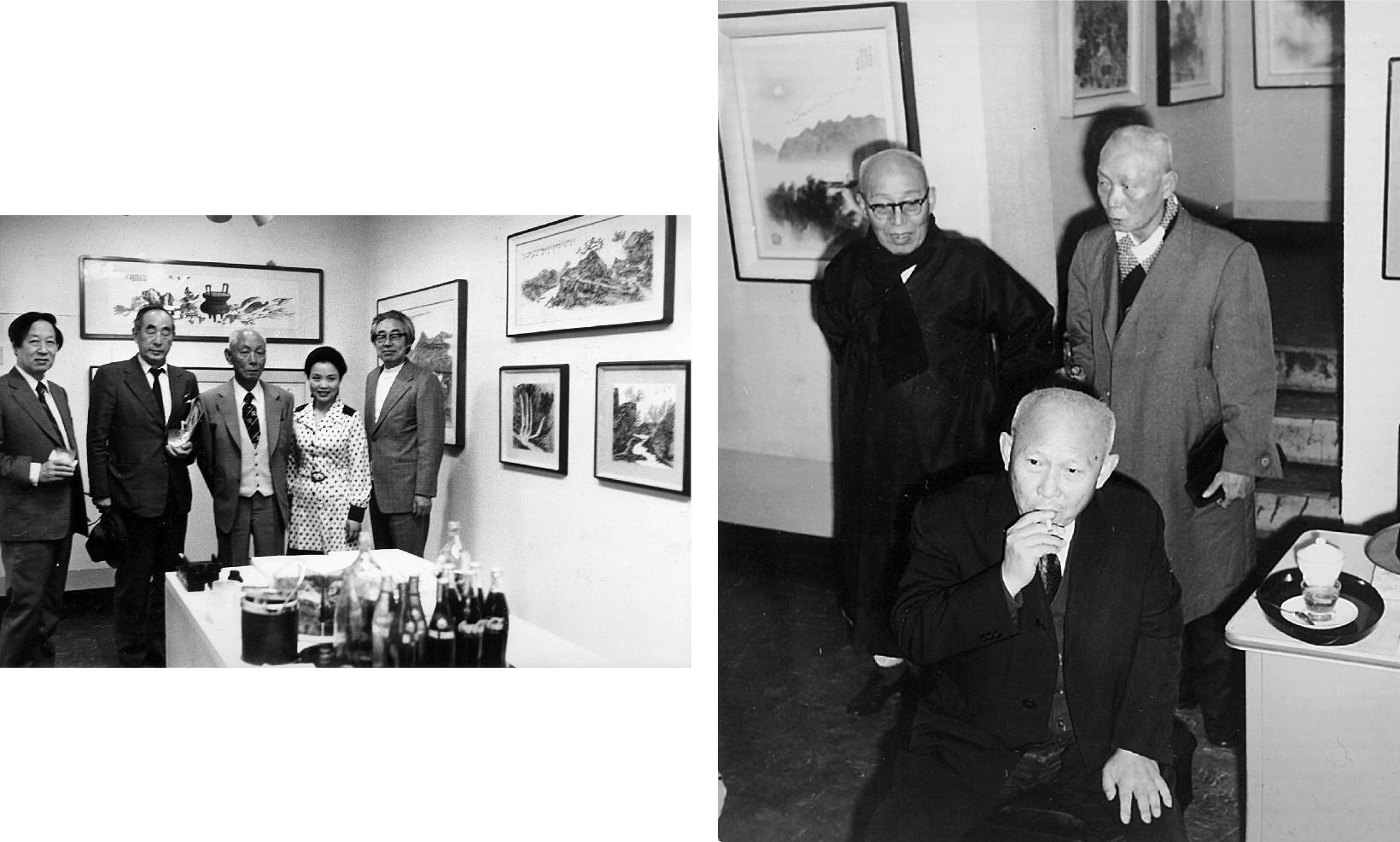
Danbalryeong Ridge was commissioned by and created for what would become the final solo exhibition during the artist’s lifetime titled Sojeong’s Paintings, which opened in 1974 at Gallery Hyundai. By this point, Byeon Gwansik had more or less put down his brush due to the infirmities of old age and was spending much of his time drinking which was also a favorite pastime. Still the Gallery’s head, Park MyungJa, wanted to make the artist’s long standing wish come true, that is, to create a masterpiece in a huge atelier, and so, putting her head together with the artist’s wife, she arranged for a studio space at a Buddhist temple in Jeongneung in Seoul. In other works, Park provided the material and moral support necessary for Byeon to put the bottle aside and return to his work, full force. In total Byeon spent six months at the temple, focused entirely on the act of creation. It was in this period that he completed both Danbalryeong Ridge and Samseonam Hermitage in Outer Mt. Geumgang, now counted among the most important Korean traditional paintings by the artist from the 1970s.
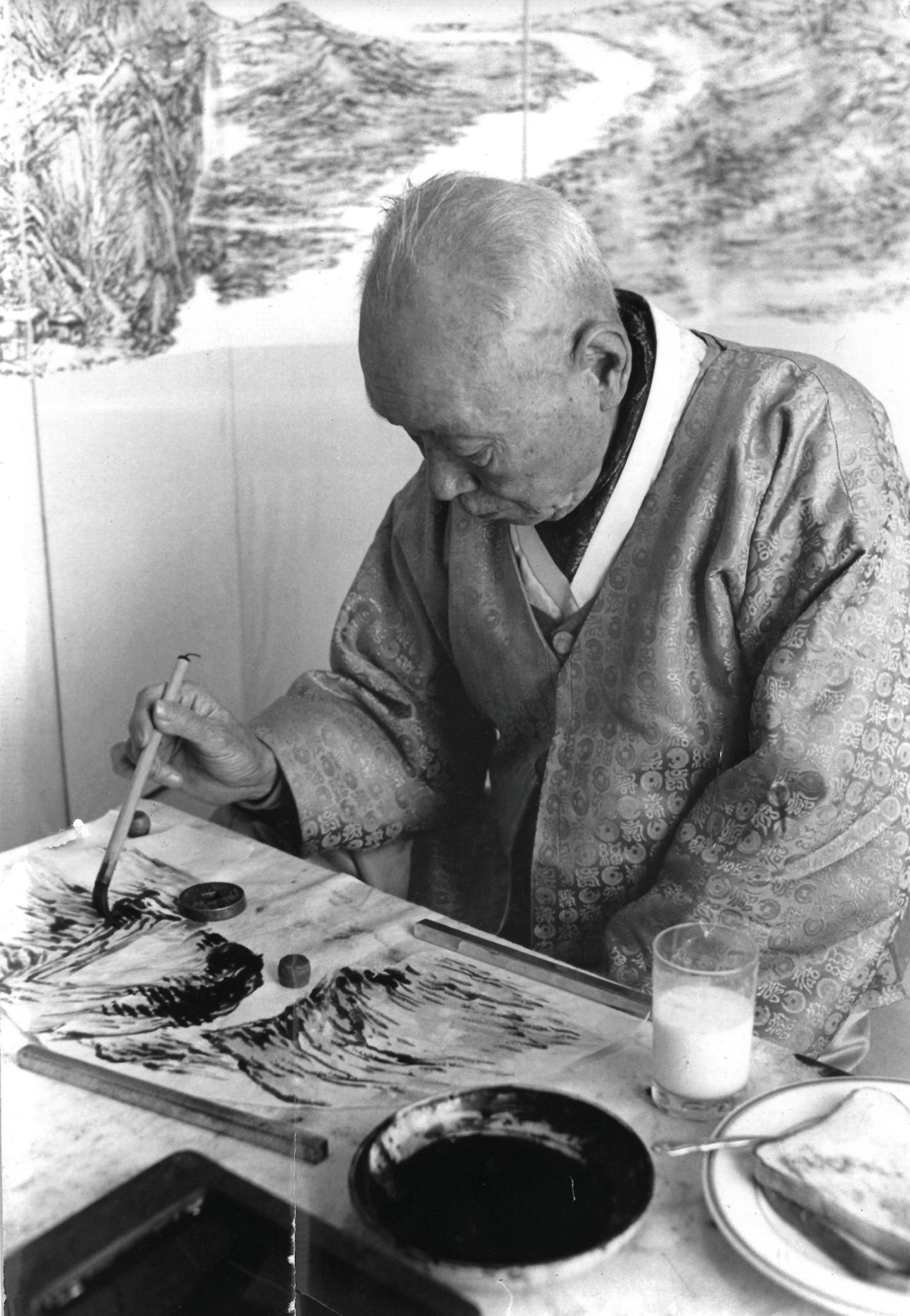
“Some people say that all my landscapes are only of Mt. Geumgang — but the truth is that I could spend the rest of my life drawing nothing else and still fail to capture all of its beauty and majesty. That’s how grand and stunning it is. Every time I draw some part of the mountain, I call up memories not just of its overall terrain but of the rocks, their individual features — of the direction of the flowing water and the strength of its current. I visited the best mountain in the Korean Peninsula for eight years and painted it for three decades. I think I can say that the mountain and I become inseparable.” - Sojeong Byeon Gwansik
The artist’s more idiosyncratic painting techniques are well captured in the works made during this time. Danbalryeong Ridge in particular is worthy of viewers’ closest attention, as its rich expression of mountain terrain speaks directly to the long hours Byeon spent exploring and sketching Mt. Geumgang—so long that he once claimed he could conjure the image of individual rocks at will. Also worth noting is the way that the angle of the perspective, seen from above as in an aerial view, presents the viewer with a rather refreshing approach to the unfolding scene from a birds-eye view. The way the ribbon of white mist moves on the other side of the pass, between it and Mt. Geumgang, evokes yet another layer of dynamism.

The maternal grandson of renowned artist and calligrapher Cho Seokjin (1853-1920), Byeon Gwansik learned to work with ceramics at the Institute of Industries under the office of the Japanese Government of Korea, before going on to study traditional painting at the School of Calligraphy and Painting, where his grandfather also held a position as a lecturer. After this he went abroad to Japan, where he studied under Komuro Suiun (1874-1945), a master of Japanese Nanga Style. In 1923, together with Lee Sangbeom (1897-1972), he organized Dongyeonsa, the first traditional painting group in Korea, submitting their works to the Exhibition of the Paintings and Calligraphy Association. His work was also selected many times for inclusion in the Joseon Art Exhibition (an annual exhibition run by the Japanese Government of Korea from 1922-1944). Post-liberation, he both served as participating artist and judge, in turn, for the National Art Exhibition of the Republic of Korea. Other than this brief initial foray, however, Byeon stood apart from the institutionalized art world, an outsider operating squarely beyond the bounds of the establishment.
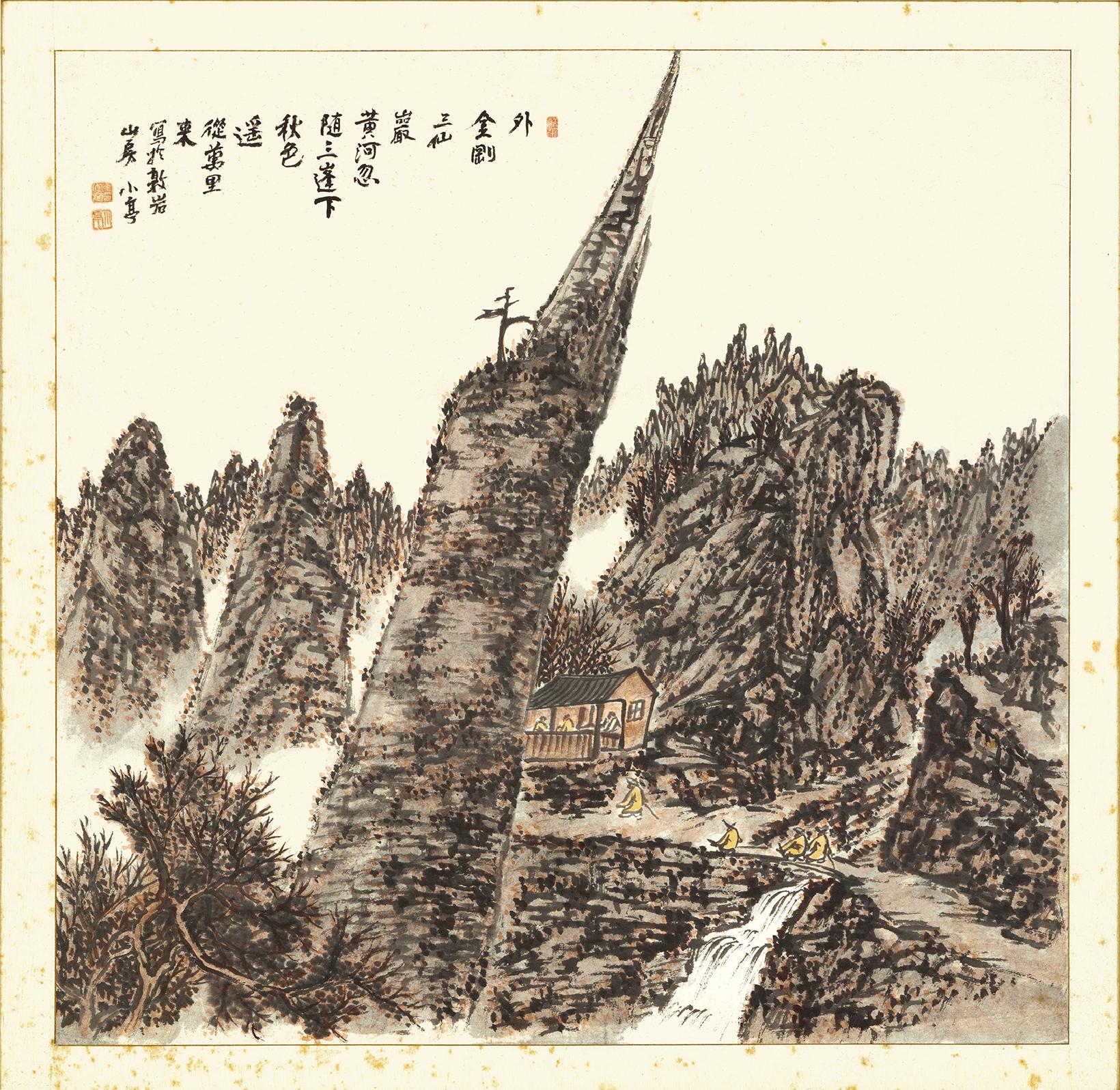
He produced mostly landscapes. In the early stages of his career, influenced by Cho Seokjin and An Jungsik (1861-1919), Byeon’s works appear to be a compromise of sorts between the softer, flowing Southern School Painting and the stiffer, tidier Northern School Painting styles. In 1937, he began traveling all over the country and painting his landscapes from life, and it was this that became the foundation for the development of his own original painting style, which combined Layered Ink, a technique of accumulating ink in layers, with Splashed Stroke, a technique of breaking strokes with ink dots. As Byeon moves into using real field drawings as the bases for his landscapes, the work becomes less idealized and distinctly more vivid, overflowing with a sense of place. The resulting compositions are tight, combining perspectives from multiple directions. Indeed, on the whole, Byeon’s works are characterized by a sense of power and conviction.
"While absorbing the external influences from Jeong Seon’s true view landscapes, Japanese Neo-Nanga School Painting, the Northern Song, and Shitao’s stylistic qualities, Sojeong transformed them into his own unique style. (…) His memory of Korean mountains and waters from wandering and enjoying nature during his younger years lead us to a level of spiritual vigor unparalleled by any other artist, expressed in the candor of Layered Ink, powerful Straight Rubbed Strokes in dry ink, and ink spots and thick ink. This world of Sojeong’s ink precisely is the consummation of Korean ink painting with a gravity and resonance one cannot find in the Chinese continent, Taiwan, nor Japan of the same time period.”1)
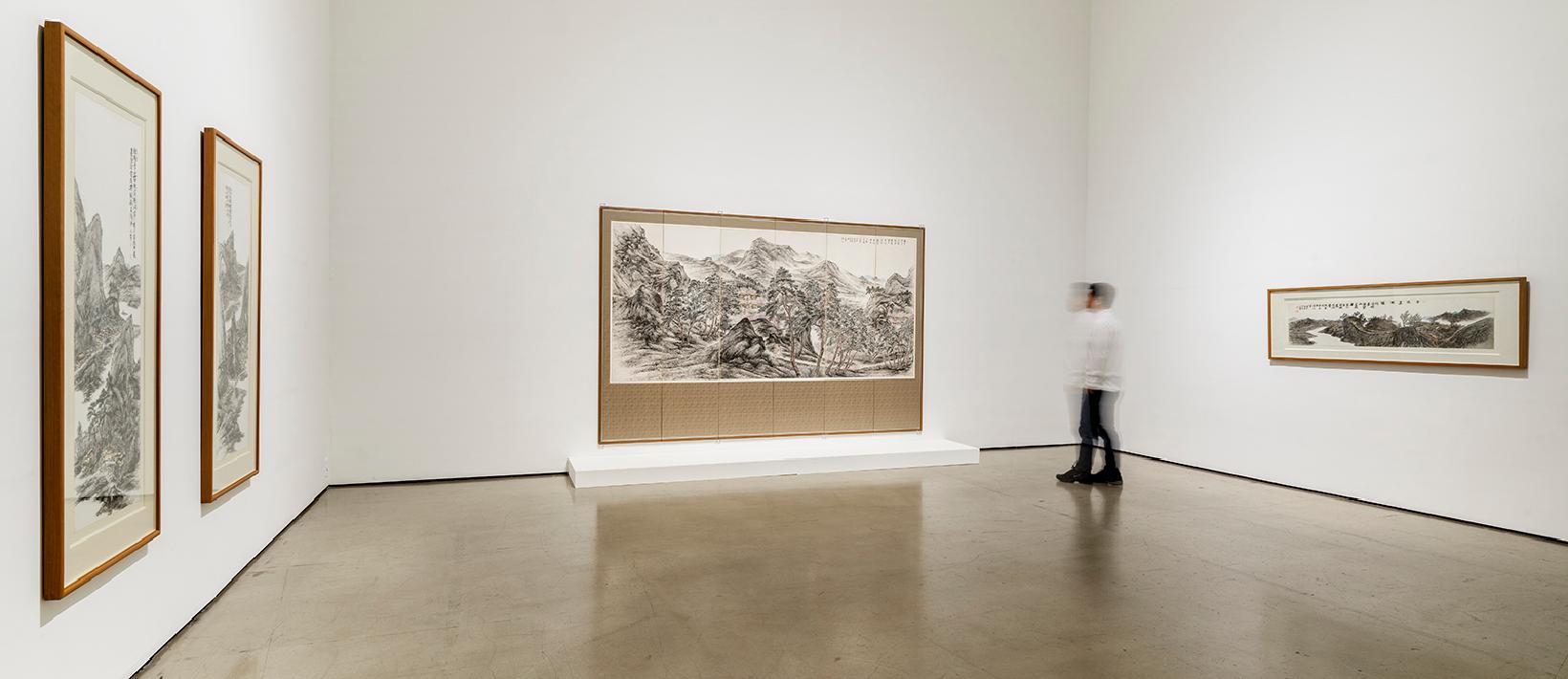
In the wake of the 1974 Gallery Hyundai solo exhibition, the art world’s estimation of Byeon Gwansik was cemented. Until this point, his landscapes, in which short, thick lines of ink were accumulated layer upon layer to create effects of blackest darkness, had been considered somewhat “defiant.” But the artist had stayed the course, continuing to create landscapes using his own signature method. As mentioned by his fellow artist Lee Daiwon (1921-2005), the landscapes of Sojeong are “marked by his distinctive use of layered brushstrokes, which creates a powerful force of lines and the heaviness of the overall picture plane. His representation of the weathered textures and wrinkles of the granite rocks has no parallel.”2) Lee dubbed Byeon’s unaffected brushwork, able to capture the essence of the Korean soil without unnecessary technical flourishes, Sojeongjun (小亭皴, Sojeong’s Stroke). Sojeong Byeon Gwansik passed away in 1976 following a period of worsening health but he remains a great master in the history of Korean modern and contemporary art.
Heami Park is an artist and exhibition associate at Gallery Hyundai.
1) Lee Joohyun, “The Erupting Vitality of Ink – Landscape Paintings of Sojeong Byeon Gwansik”, Sojeong Byeon Gwansik, Maroniebooks, 2019.
2) Lee Daiwon, Sojeong’s Paintings, Gallery Hyundai, 1974.